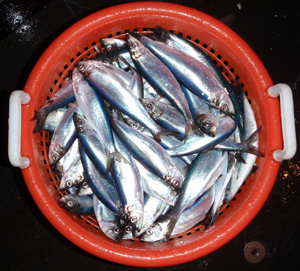With a GHL of 38,749 tons, and only two seiners and one gillnetter participating in the fishery, it is safe to assume there were some grand hauls made in Togiak for the Alaska herring 2020 season. Exact harvest data will remain confidential with fewer than five vessels partaking in the harvest.
The Sitka sac roe fishery struck out last year after managers and the industry decided the fishery should remain closed for its second year in a row. The predominance of herring recruiting into the fishery have been 3-year-olds. With weights of about 90 grams per fish, buyers aren’t interested in the tiny egg skeins for salted roe markets in Japan.
Managers had hoped the fishery would target a growing population of 4-year-olds, but they average 110 grams — still shy of the 140-gram fish that produce ideal skein size for the market.
It didn’t help either that the processing industry had been hobbled by the onset of covid in the weeks before the season typically opens.
Meanwhile, more than 900 miles northwest of Sitka, the Togiak industry suffers from fish too large for the market. In the Bering Sea, herring grow to 285 to 330 grams by the time they are 6-and-7-year-olds, which is the predominant age class harvested in the fishery. Still, one floating processor anchored at Togiak last year and sent product to Japan.
While the abundance of herring stocks in both Sitka and Togiak continue to rise, the declining trend in demand over the past decade for the salted skeins indicates the industry has returned to what it was in the 1960s and early ’70s.
As for the coming season, Tim Sands, the state’s area management biologist in Dillingham, says recent surveys indicate there will be plenty of fish and that 27 percent of those will be 240-gram 5-year-olds, which are a bit closer to the target for market size. Another 47 percent are expected to be 6-and-7-year-olds, which should weigh in at under 300 grams.
“This is a much smaller fish size than we’re used to at Togiak,” says Sands.
With 42,000 tons on tap for the 2021 season, it’s highly likely only a fraction of the potential harvest will make it to market.
“Even with four processors you can’t catch that many fish; you can’t freeze them.”







